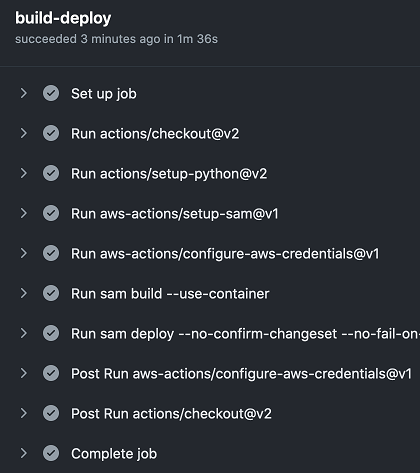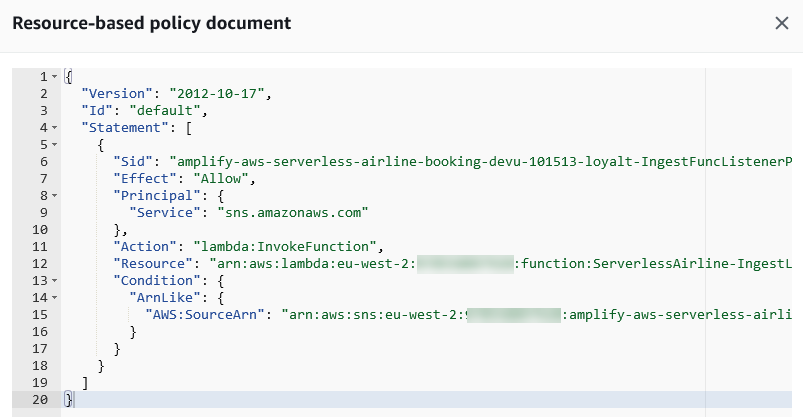AWS Compute Blog
Tag: serverless
Monitoring and troubleshooting serverless data analytics applications
In this post, I show how the existing settings in the Alleycat application are not sufficient for handling the expected amount of traffic. I walk through the metrics visualizations for Kinesis Data Streams, Lambda, and DynamoDB to find which quotas should be increased.
Using GitHub Actions to deploy serverless applications
This post is written by Gopi Krishnamurthy, Senior Solutions Architect. Continuous integration and continuous deployment (CI/CD) is one of the major DevOps components. This allows you to build, test, and deploy your applications rapidly and reliably, while improving quality and reducing time to market. GitHub is an AWS Partner Network (APN) with the AWS DevOps […]
Deploying machine learning models with serverless templates
This post written by Sean Wilkinson, Machine Learning Specialist Solutions Architect, and Newton Jain, Senior Product Manager for Lambda After designing and training machine learning models, data scientists deploy the models so applications can use them. AWS Lambda is a compute service that lets you run code without provisioning or managing servers. Lambda’s pay-per-request billing, automatic […]
Building well-architected serverless applications: Managing application security boundaries – part 1
This series of blog posts uses the AWS Well-Architected Tool with the Serverless Lens to help customers build and operate applications using best practices. In each post, I address the serverless-specific questions identified by the Serverless Lens along with the recommended best practices. See the introduction post for a table of contents and explanation of the example application. Security question SEC2: […]
Building leaderboard functionality with serverless data analytics
In this post, I explain the all-time leaderboard logic in the Alleycat application. This is an asynchronous, eventually consistent process that checks batching of incoming records for new personal records. This uses Kinesis Data Firehose to provide a zero-administration way to deliver and process large batches of records continuously.
Prototyping at speed with AWS Step Functions new Workflow Studio
AWS recently introduced Workflow Studio for AWS Step Functions. This is a new visual builder for creating Step Functions workflows in the AWS Management Console. This post shows how to use the Workflow Studio for rapid workflow prototyping. It also explains how to transition to local development, integrating the prototype with your infrastructure as code […]
Exploring serverless patterns for Amazon DynamoDB
Amazon DynamoDB is a fully managed, serverless NoSQL database. In this post, you learn about the different DynamoDB patterns used in serverless applications, and use the recently launched Serverless Patterns Collection to configure DynamoDB as an event source for AWS Lambda. Benefits of using DynamoDB as a serverless developer DynamoDB is a serverless service that automatically […]
Building serverless applications with streaming data: Part 3
In this post, I explain the all-time leaderboard logic in the Alleycat application. This is an asynchronous, eventually consistent process that checks batching of incoming records for new personal records. This uses Kinesis Data Firehose to provide a zero-administration way to deliver and process large batches of records continuously.
Getting started with serverless for developers part 5: Sandbox developer account
This is part 5 of the Getting started with serverless series. In part 4, you learn how the developer workflow for building serverless applications differs to a traditional developer workflow. You see how to test business logic locally before deploying to an AWS account. In this post, you learn how to secure and manage access […]
Announcing migration of the Java 8 runtime in AWS Lambda to Amazon Corretto
Beginning July 19, 2021, the Java 8 managed runtime in AWS Lambda will migrate from the current Open Java Development Kit (OpenJDK) implementation to the latest Amazon Corretto implementation.









